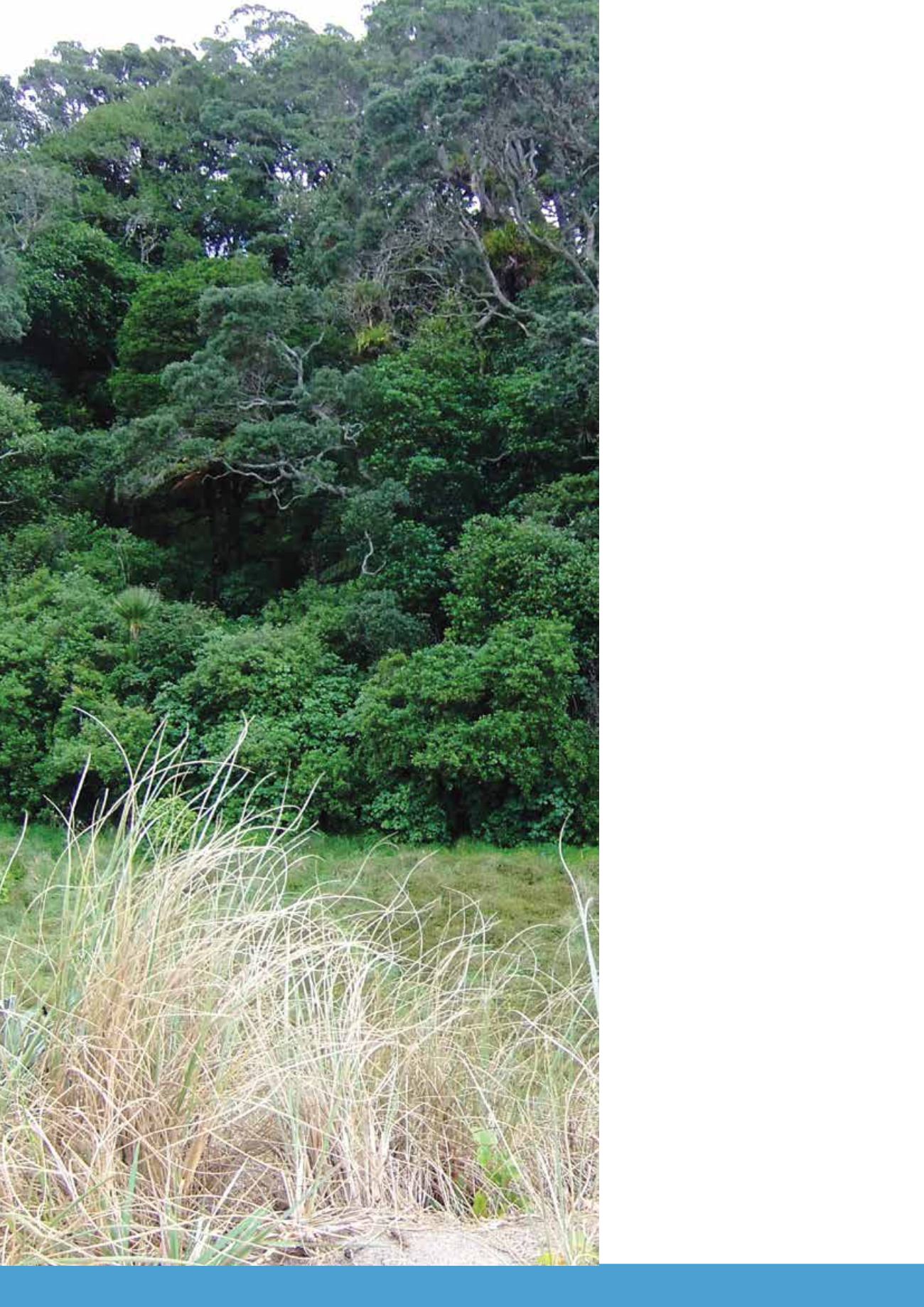
16
Loss of
coastal
vegetation
The Waikato region has about
1150 kilometres of open coast and
estuarine shoreline. Our coast-
line has sites of outstanding
beauty and of high cultural and
natural values. It also provides us
with valuable resources. Before
European settlement, the vast
majority of the Waikato region’s
vegetation was native. Today,
about a quarter of the region is in
native vegetation, most of it forest.
Lowland and coastal areas have
had the greatest changes.
Dune-lands
The region’s dunes have been greatly affected
by human activities since the early European
settlement of coastal areas. The loss of dune
plants has led to widespread wind erosion,
especially of the most seaward dunes. This led to
the loss of the protective buffer dunes provide
against erosion and flooding, a reduction in
natural character, and on the west coast it
resulted in sand moving inland, burying land. A
recent survey of Waikato coastal dunes showed
that about 70 per cent of the total dune area has
been modified for coastal subdivisions, forestry,
agriculture and sand mining over the last 55
years.
Our dunes were originally covered by native
sand grasses on the seaward face of the fore-
dune and larger, more diverse shrubs and trees
inland. Today, no intact examples of this natural
plant sequence remain in the Waikato region.
The loss of native coastal trees and shrubs is
particularly obvious.
Left: A good example of coastal forest consisting of
pōhutukawa, kohekohe and kawakawa behind the
dunes at Hotwater Beach, Coromandel.


